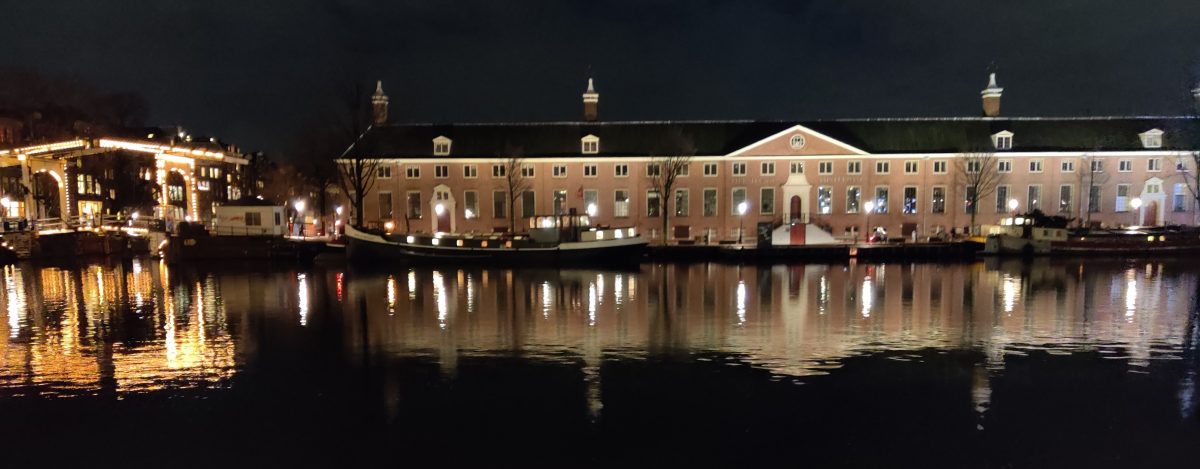“In England, we build castles for nobility. In Amsterdam, they build them for the poor.” – an aristocrat remarking on Amsterdam’s home for the elderly
Like many people around the world, the pandemic has made me question the city I live in. It’s so easy to see the ways the government and my fellow citizens have fallen short. I’ve also spent the year researching and writing about the city’s BIPOC history, which is a difficult story to live with. Then, a nighttime walk reminded me why I have faith in Amsterdam.
I ended up on the Magere Brug, Amsterdam’s famous Skinny Bridge. We were in a partial lockdown, so my walk there was much darker than normal, in both senses of the word. Our city’s renowned nightlife has once again been suspended. The streets were nearly empty, and the businesses that normally spill light onto the cobbled streets were dim.
So, what was the sight that stopped me halfway across the Amstel? As I looked towards the city center, I saw the Hermitage Museum, which occupies a building that 17th-century Amsterdammers built so that the elderly poor would have a place to live and be taken care of. It was a time where old age was a terror to all but the rich, but Amsterdammers joined together to build a home full of light and space for those who had nowhere to go. Past that, I saw the City Hall where the world’s first gay marriage was celebrated. To the right were mansions owned by Jewish families at a time when other countries had pogroms and the Inquisition.
I stood staring as the cold seeped into my bones. (Like a good child of the American Midwest, I wear my autumn coat far too long into winter.) I saw yellow light spilling from large windows in every home, reminding me of the citizens who’d welcomed arrivals like me from every corner of the globe. I saw the Skinny Bridge’s twin, which is named after a man named Walter Suskind who saved 600 children from concentration camps during the Nazi occupation. I saw the headquarters of the Women’s International League for Peace and Freedom, which grew out of the international women’s suffrage movement.
I walked down the river to see a beautiful light display that’s part of Amsterdam’s yearly festival of light art. This city has drawn artists like Nina Simone, Rembrandt, Jason Sudekis and Brendan Hunt, aka Ted Lasso and Coach Beard. When I got to the bridge overlooking the artwork, there was a group of people watching it. Some were chatting in Dutch, others in accented English. Someone was playing a Christmas carol on their phone.
Amsterdam isn’t a perfect place, and it is struggling with the same fractures that many cities currently are. But we have a long history of welcoming people who are different and caring for the vulnerable. A view from the Magere Bridge reminded me of what the Amsterdam can be and gave me hope for what it will be.














